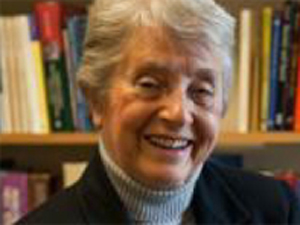In my work on the renewal of Religious Life over the last eight years I have come to the conclusion that Congregations like ours [the kind represented by LCWR in this country, USA] have, in fact, birthed a new form of Religious Life.
 We are really no longer “Congregations dedicated to works of the apostolate” – that is, monastic communities whose members “go out” to do institutionalized works basically assigned by the hierarchy as an extension of their agendas, e.g., in Catholic schools and hospitals, etc. We are ministerial Religious. Ministry is integral to our identity and vocation. It arises from our baptism specified by profession, discerned with our Congregational leadership and effected according to the charism of our Congregation, not by delegation from the hierarchy.
We are really no longer “Congregations dedicated to works of the apostolate” – that is, monastic communities whose members “go out” to do institutionalized works basically assigned by the hierarchy as an extension of their agendas, e.g., in Catholic schools and hospitals, etc. We are ministerial Religious. Ministry is integral to our identity and vocation. It arises from our baptism specified by profession, discerned with our Congregational leadership and effected according to the charism of our Congregation, not by delegation from the hierarchy.
We are not monastics at home. We are not extensions of the clergy abroad. Our whole life is affected by our ministerial identity: searching out the places (often on the margins of Church and society) where the need for the Gospel is greatest (which may be in Church institutions but often is not); living in ways that are conducive to our ministry; preaching the Gospel freely as Jesus commissioned his itinerant, full time companions to do. Our community life and ministries are corporate but not “common life” in the sense of everyone in the same place at the same time doing the same thing.
The phase of postconciliar “up-dating” for us was brief. We realized, by our return to the Gospel and to our own foundations, that we were called to much more radical [meaning in-depth] renewal than surface adjustments of lifestyle. There is no going back. We read Perfectae Caritatis through the lenses of Gaudium et Spes and Lumen Gentium and we were called out of the monastic/apostolic mode and into the world that Gaudium et Spes declared the Church was embracing after centuries of world rejection.
There is no problem with the Council of Major Superiors of Women Religious-type communities continuing the older form of religious life. Benedictinism didn’t disappear when the Franciscans were founded. There is only a problem if they feel called to halt the journey we are on. That’s where, in my view, we just have to be as courageous as our forebears like Angela Merici (founder of the Ursulines), Mary Ward (IBVM), Nano Nagle (Presentation), Marguerite Bourgeoys (CND) and Louise de Marillac (Daughters of Charity of Vincent dePaul) and all those other pioneers of apostolic Religious Life long before it was officially approved in 1900. The institutional Church has always resisted the new in Religious Life, especially among women. But the new will continue to happen. At this moment in history, we are it. So, let’s be what we are: Religious who are not cloistered and ministers who are not ordained. Canon law has no categories yet for that combination. But we exist. Law follows life, not vice versa.
In part 4 of her 5-part essay, Sandra Schneiders writes: Religious Life, then, is a charismatic life form, called into existence by the Holy Spirit, to live corporately the prophetic charism in the Church. It is not a work force gathering recruits for ecclesiastical projects and it does not receive its mission nor the particular ministries of its members from the hierarchy. Congregations, in the exercise of particular ministries within dioceses or parishes, are bound by the applicable local directives and must work collaboratively with the ordained leadership. But this does not put the Congregation or its members “under” the bishop or clergy. This is especially true of “exempt” Congregations that minister across ecclesiastical boundaries.
No Congregation “needs” more members than are actually called to it by God. There is no optimal or minimum size for orders or length of their lifespan. Some orders have never had more than a few dozen members and others have thousands. Some are centuries old and others have had a very brief history. The purpose of the life is not to perpetuate particular Congregations nor to staff Church institutions; it is to live intensely the witness to the Gospel to which the Congregation is called and for as long as it is so called.
